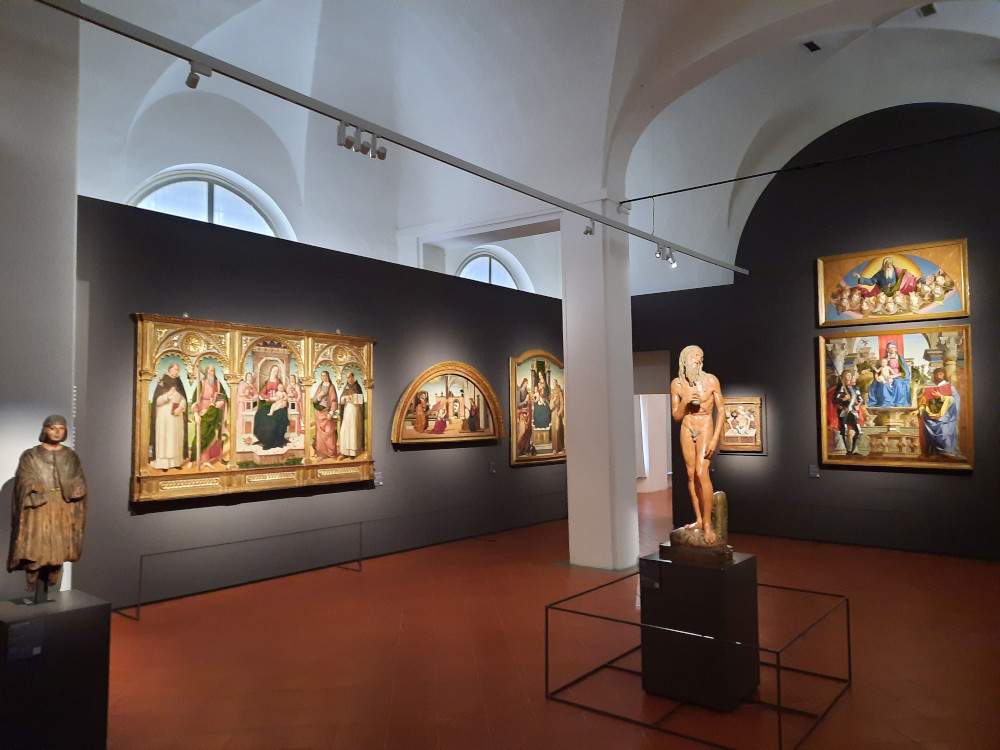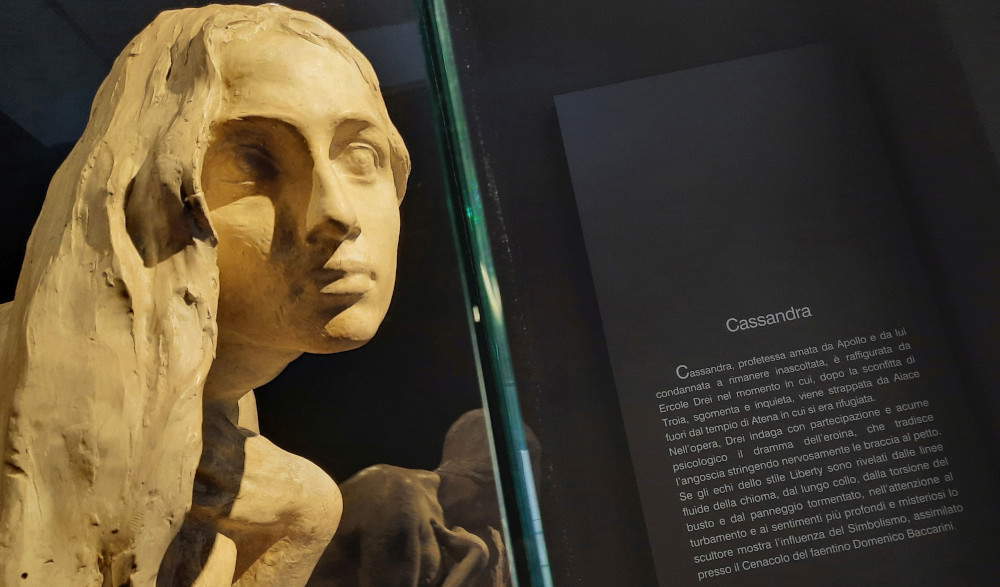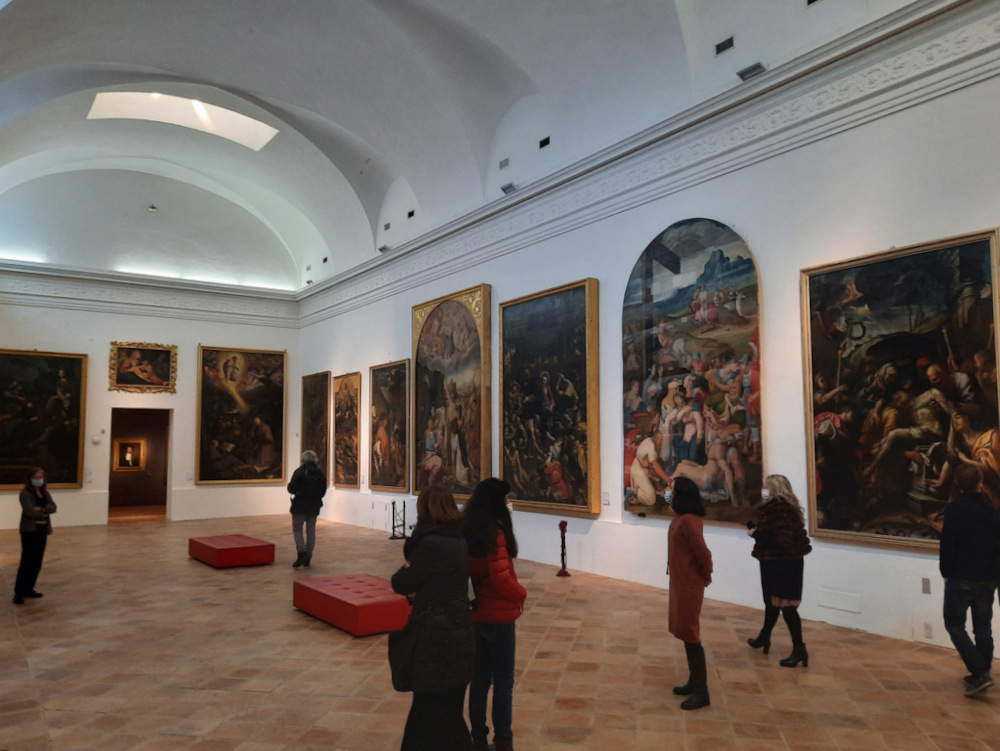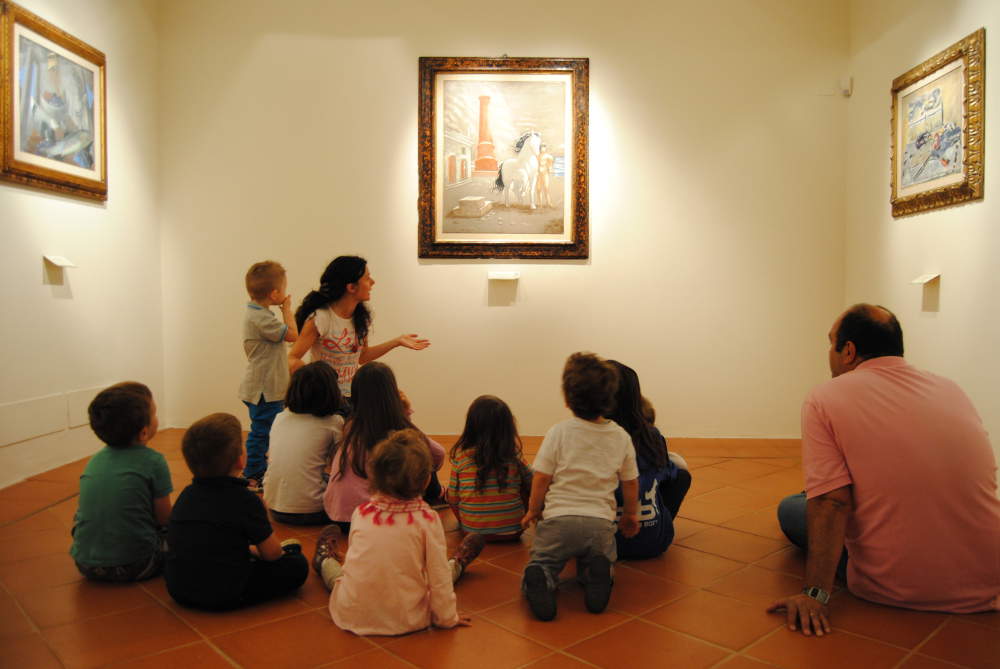After theflooding that hitEmilia Romagna last month, in Faenza, among the cities most affected, the Pinacoteca Comunale (Municipal Art Gallery ) reopened its doors to visitors on June 9, thus continuing its primary goal of making its important art collections known. Based in a part of theformer Jesuit convent in the heart of the city, the Pinacoteca was founded in 1797, but it was first opened to the public eighty years later, in 1879; it is the oldest museum institution in Faenza, a true cultural city that hosts as many as fourteen museums, both public and private, on its territory, as well as one of the most prestigious museums in the region. The original nucleus of its art collections consists of paintings from the convents and churches suppressed by Napoleonic laws, later enriched from the deposit of works of the Congregation of Charity and a systematic campaign of purchases.
The two hundred works on display tell more than a thousand years of history and art in Faenza, from the Middle Ages to the 20th century, with forays into the national and international scene. Among the artists featured in the permanent exhibition are Donatello, Giovanni da Rimini, Marco Palmezzano, Guercino, Felice Giani, and again Giorgio Morandi, Arturo Martini, Mario Sironi, and Felice Casorati, among the great artists of the Italian twentieth century.
The exhibition itinerary was recently renovated, also redefining the spaces and layouts and leading to a new idea of a museum, which continued with the restoration campaign on the most valuable works made possible thanks to the contribution of the Emilia Romagna Region. Following the major renovation work carried out during the period of closure due to the health emergency, the Pinacoteca welcomes its visitors with a new look and new ways of visiting. New apparatus, new technologies to support the visit and new educational activities offered to families and schools, which now make the Pinacoteca Comunale di Faenza a place of participation and growth.
Following a chronological order, the museum presents a wide selection of paintings and sculptures from the Middle Ages to the 20th century that illustrate Faenza and Italian culture throughout the centuries.
A visit to the Pinacoteca begins with a large art nouveau sculpture by Ercole Drei depicting Cassandra, which serves as a backdrop to a series of Byzantine and Romanesque sculptures and epigraphs from churches in Faenza and Ravenna. Works from the 13th and 14th centuries include the Madonna and Child, Two Angels and Saints Francis, Michael, Augustine, Catherine and Clare by Giovanni da Rimini, among the most important followers of Giotto, and a rare shaped cross by the Master of the Franciscan Crucifixes.
The Renaissance, on the other hand, is evidenced by works that show how Faenza was in step with the innovations of the time. In the center of the main hall is a wooden sculpture of St. Jerome attributed to Donatello, and on the walls are paintings by Biagio d’Antonio, a Florentine active in the city but also at the Sistine Chapel in Rome; by the Master of the Bertoni Altarpiece, strongly inspired by Ferrara painting of the time; by Marco Palmezzano of Forlì, whose monumental Micheline Altarpiece is an extraordinary example of perspective expertise; and finally by Giovanni Battista Bertucci the Elder, a local glory who shows himself up to date with Perugino’s painting. Fifteenth-century art in the city under the rule of the Manfredi is also represented in a room on the second floor, in which are a head of St. John by Benedetto da Maiano and two rare wedding chests by Jacopo da Faenza, active in Venice as a carver.
Then in the large hall on the second floor are monumental 16th- and 17th-century altarpieces from the major churches of Faenza, testifying to the vibrant figurative culture in the city between Mannerism and Baroque, with the only known work by Giovanni Battista Armenini, an internationally renowned scholar and treatise artist who was also active for Philip II of Spain, as well as paintings by Ferraù Fenzoni and Guercino. The modern section opens with paintings by Felice Giani, an artist who left an indelible mark on Faenza at the end of the 18th century: in the city he decorated the main aristocratic residences, including Palazzo Milzetti, now the Museum of the Neoclassical Age in Romagna in Faenza.
The Faenza artistic renewal of the early 20th century is documented by the works of Domenico B accarini and the members of the Cenacolo Baccariniano, and they fit fully into the international art scene between Art Nouveau and Expressionism. In addition, the Pinacoteca houses the Bianchedi Bettoli-Vallunga collection: a coherent and comprehensive selection of the Italian twentieth century, with paintings by, among others, Giorgio De Chirico, Alberto Savinio, Gino Severini, Carlo Carrà, Mario Sironi, Giorgio Morandi, Massimo Campigli, Filippo De Pisis, and Felice Casorati.
Scholars and museum institutions have always paid special attention to the works housed here, including through requests to participate in the most important exhibition events on the national and international scene. In addition, the Pinacoteca has always maintained relations with the local community, collaborating with schools and the cultural and social realities of the area in the implementation of initiatives for the dissemination of knowledge of Faenza’s heritage and history in support of sustainable, conscious and responsible tourism.
Visiting the Pinacoteca Comunale di Faenza therefore means seeing the most important exhibition of art in Romagna from the Middle Ages to the 20th century, understanding above all how the city and its territory have always kept up with artistic innovations and how energetically figurative culture has been sustained and preserved over the centuries.





 |
| At Faenza's Pinacoteca, the most important art collection in Romagna from the Middle Ages to the 20th century |
Warning: the translation into English of the original Italian article was created using automatic tools. We undertake to review all articles, but we do not guarantee the total absence of inaccuracies in the translation due to the program. You can find the original by clicking on the ITA button. If you find any mistake,please contact us.